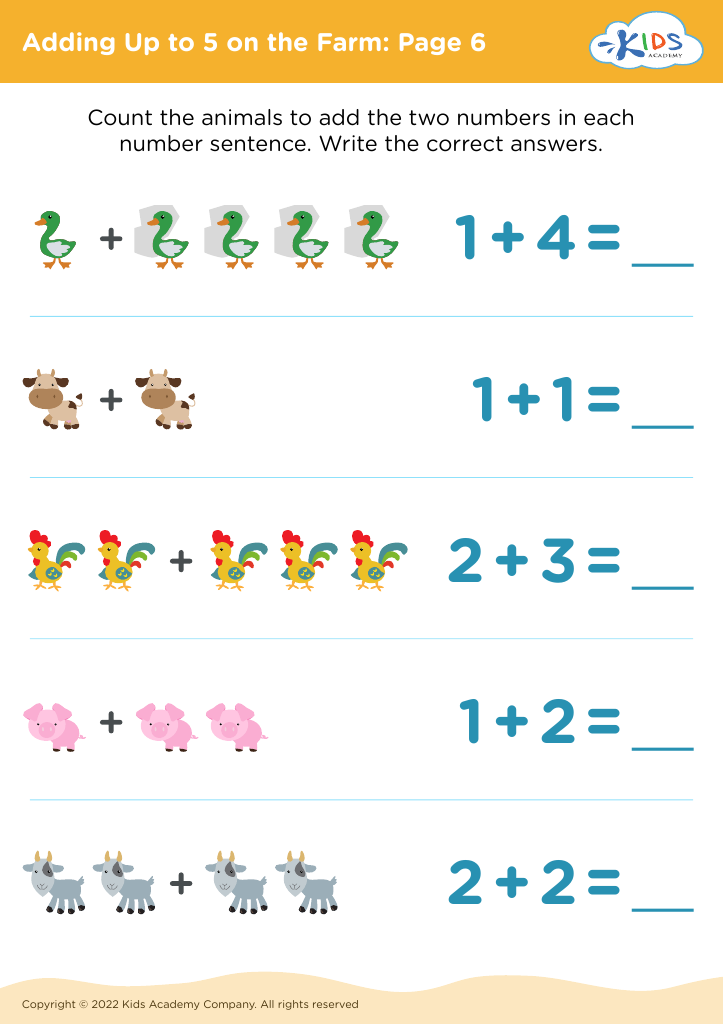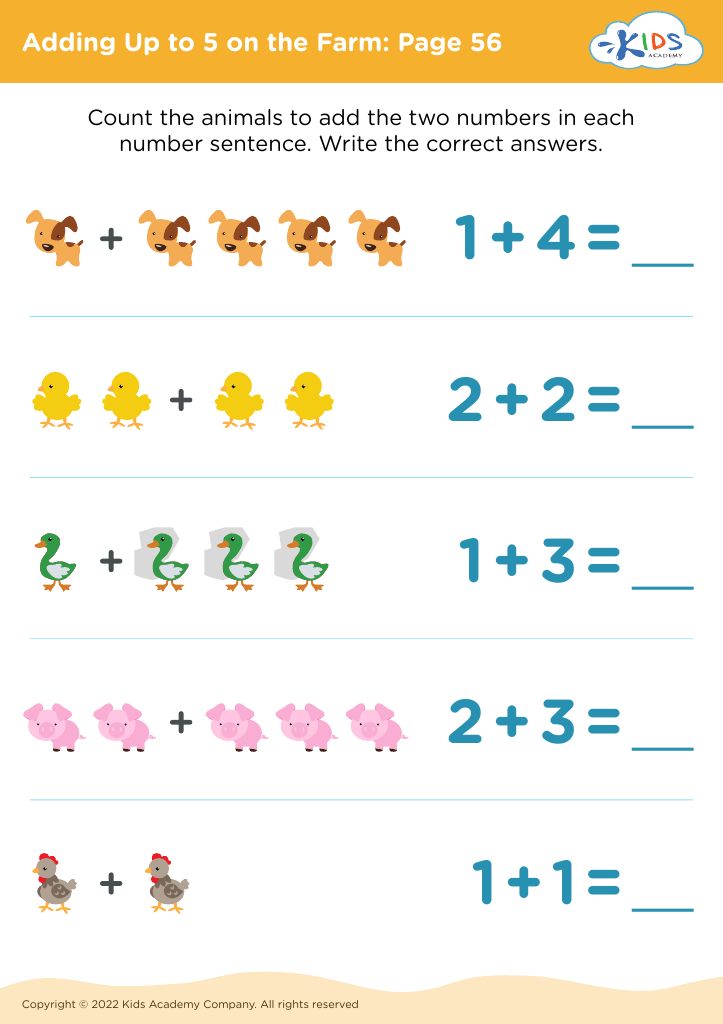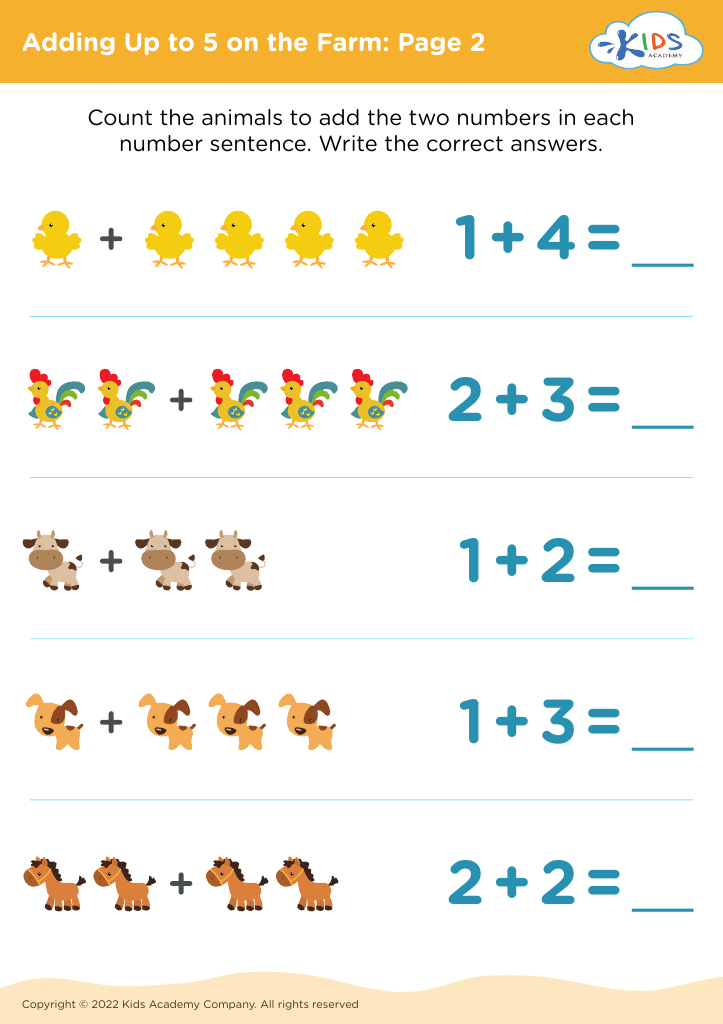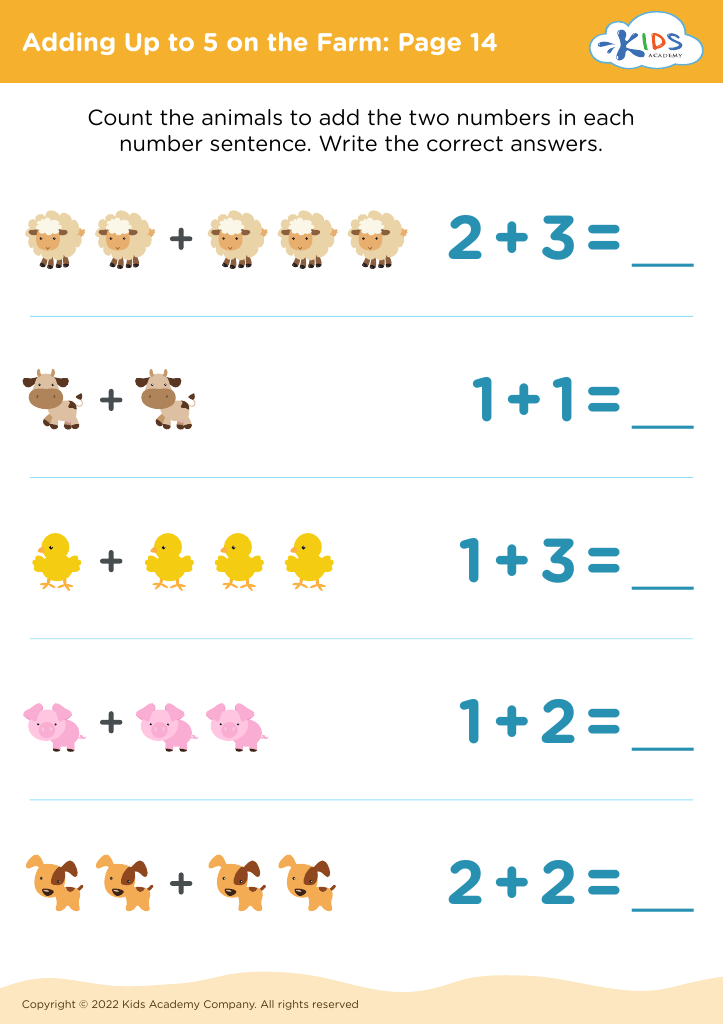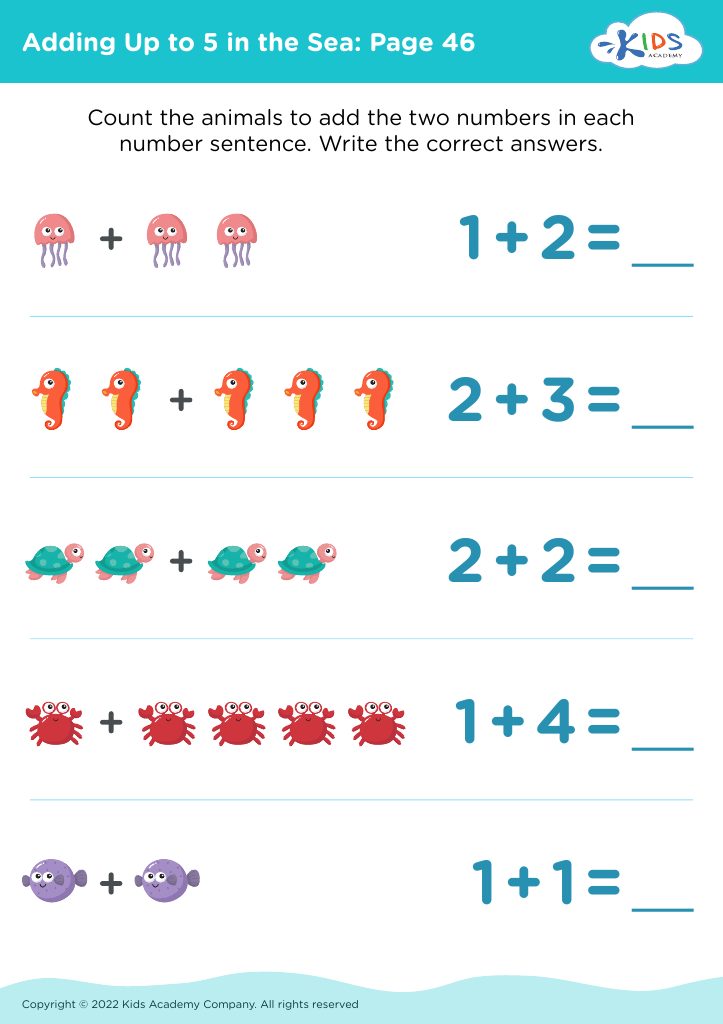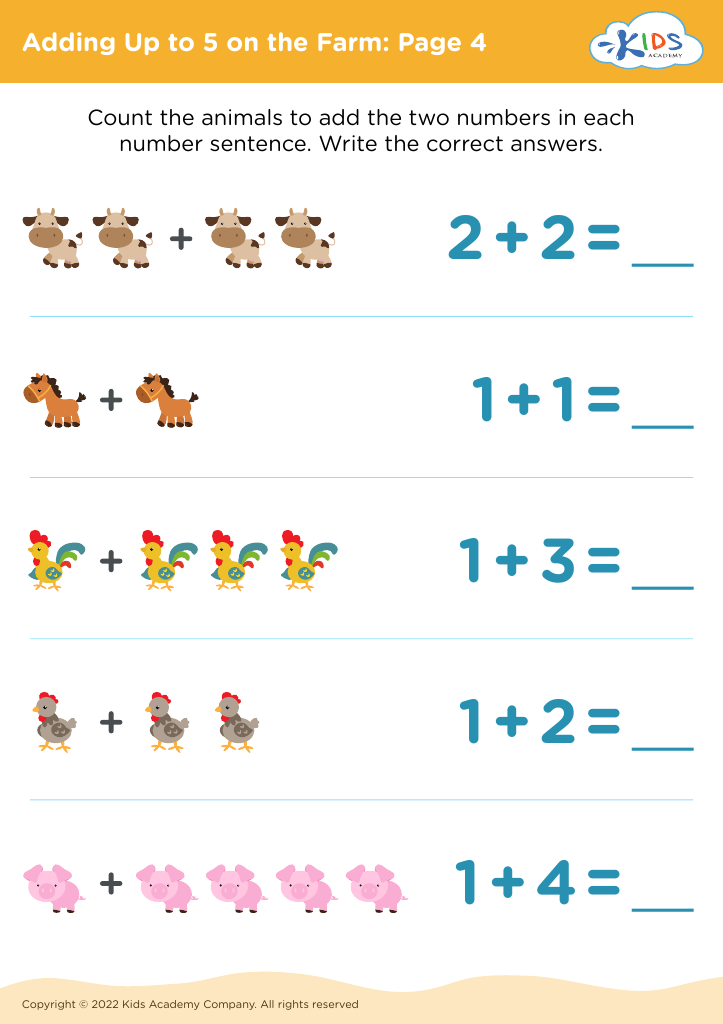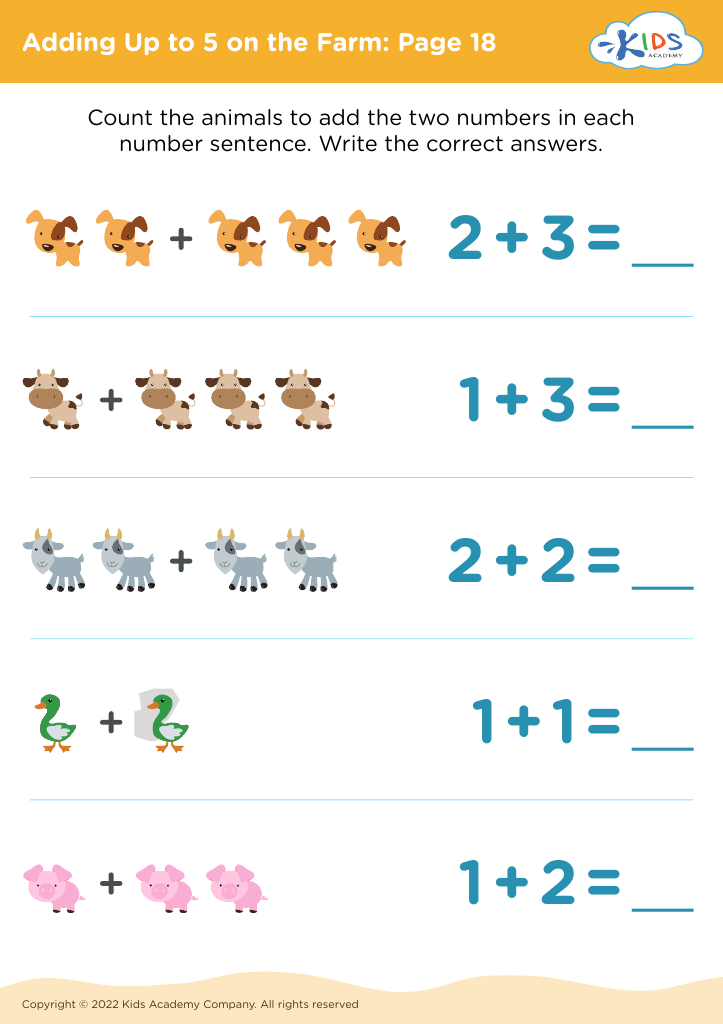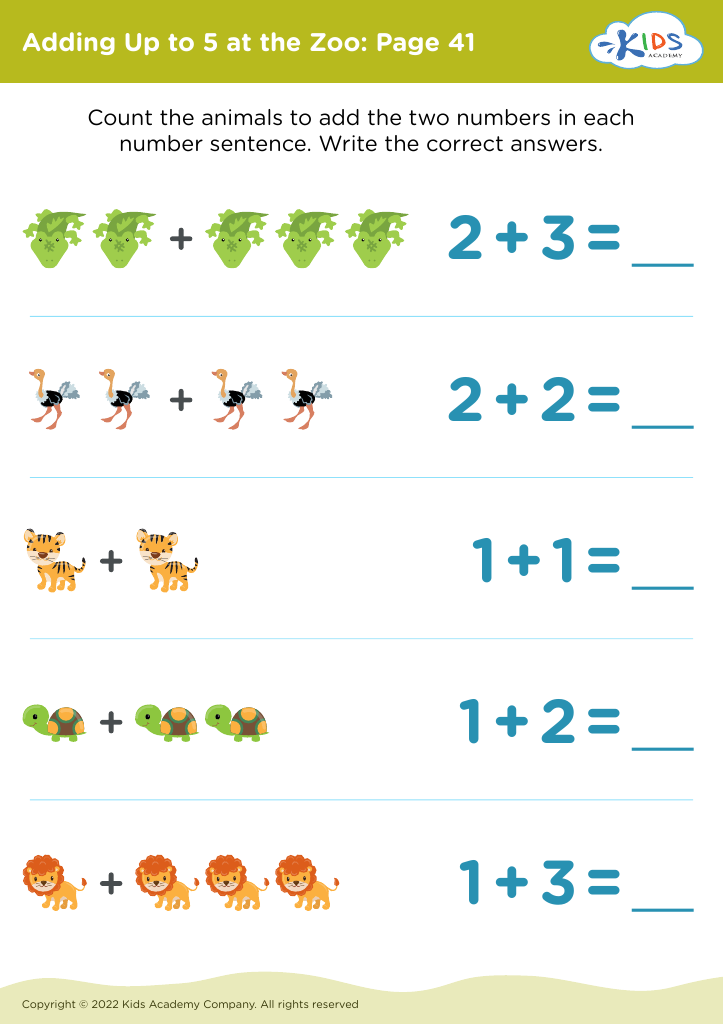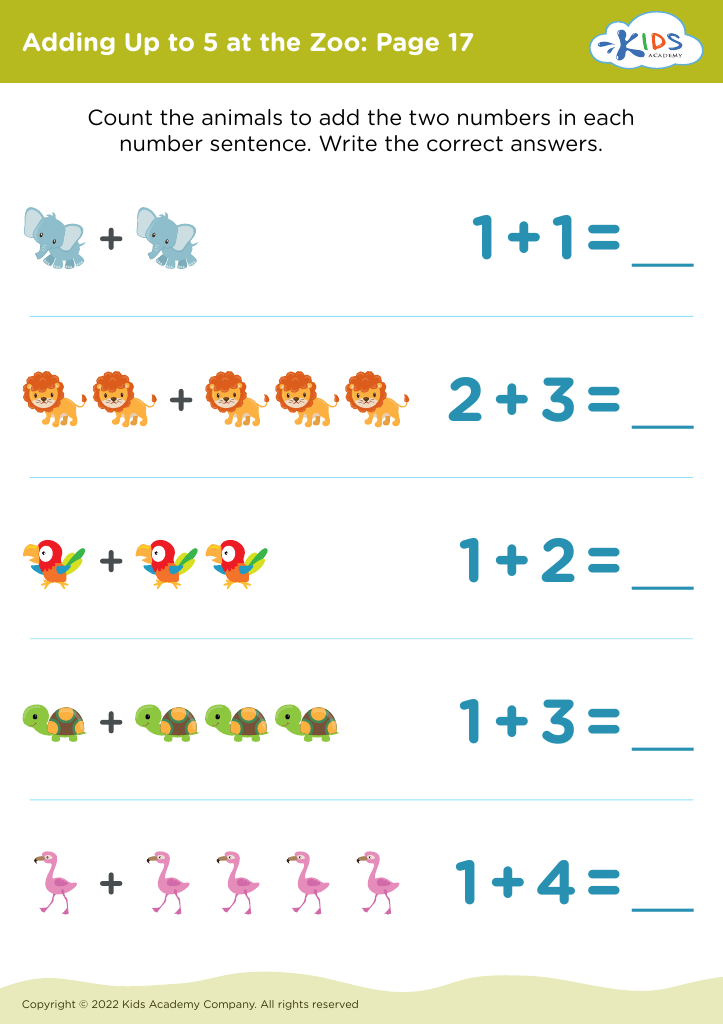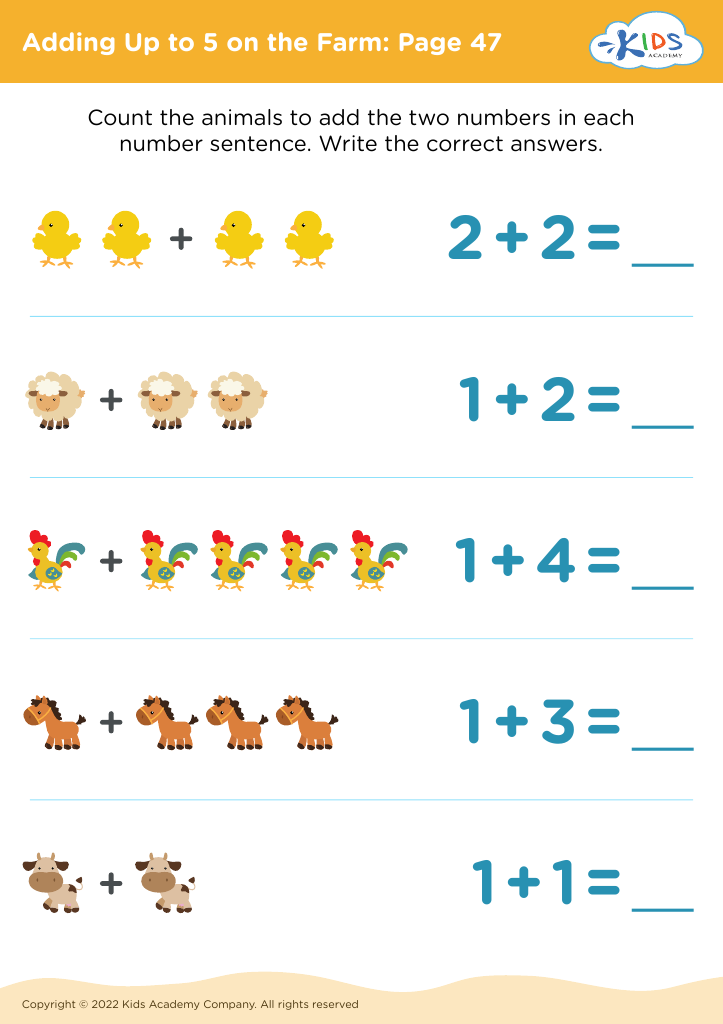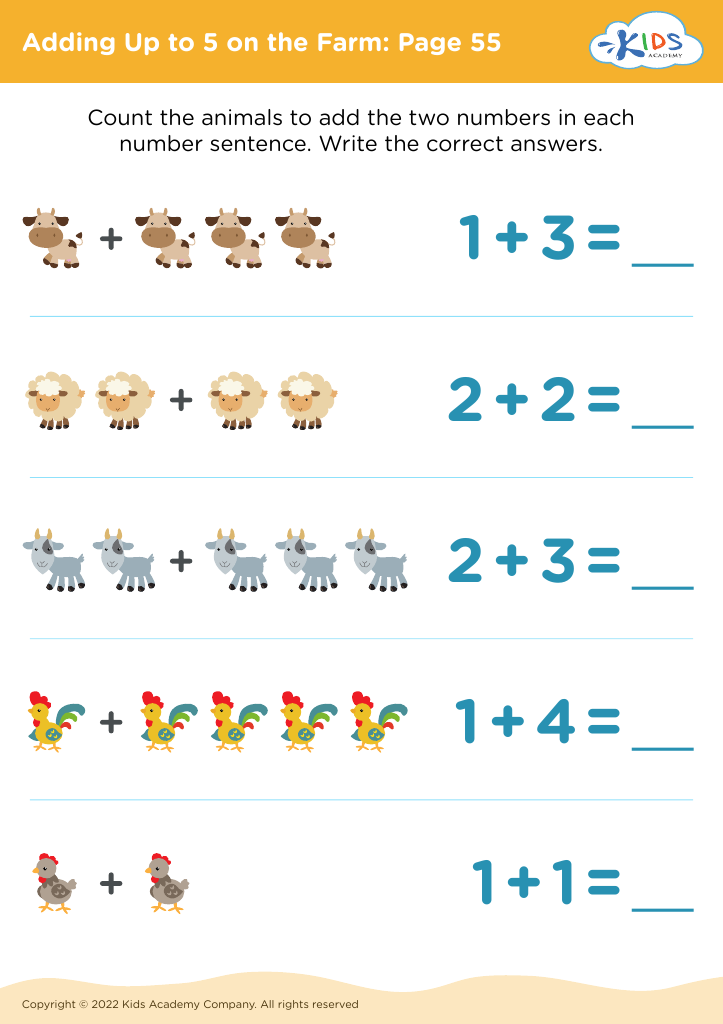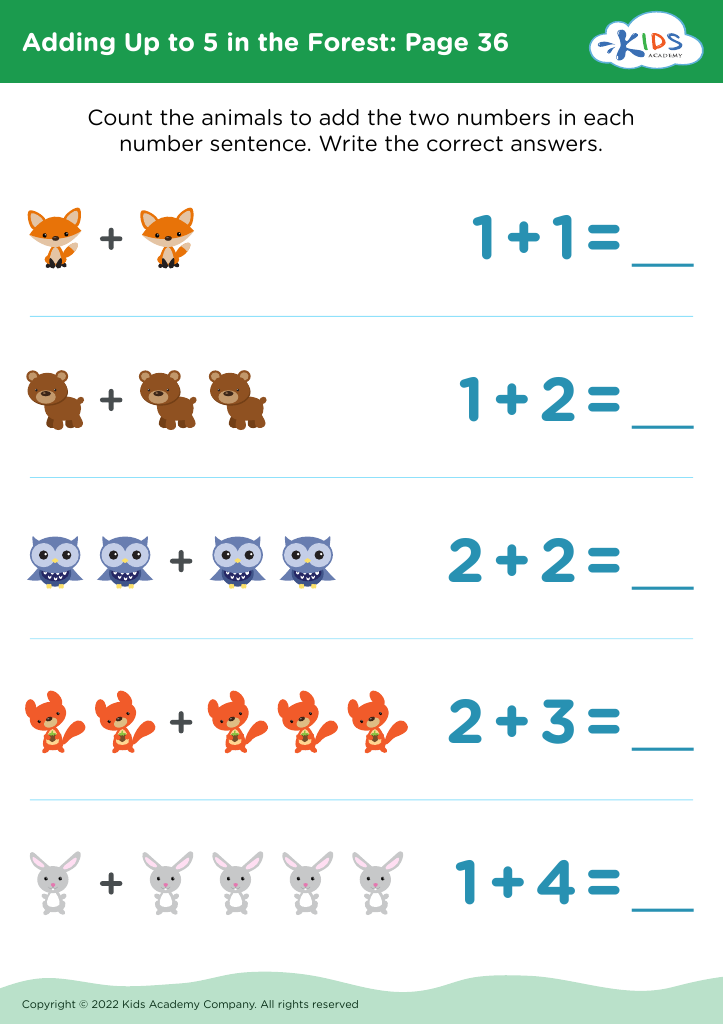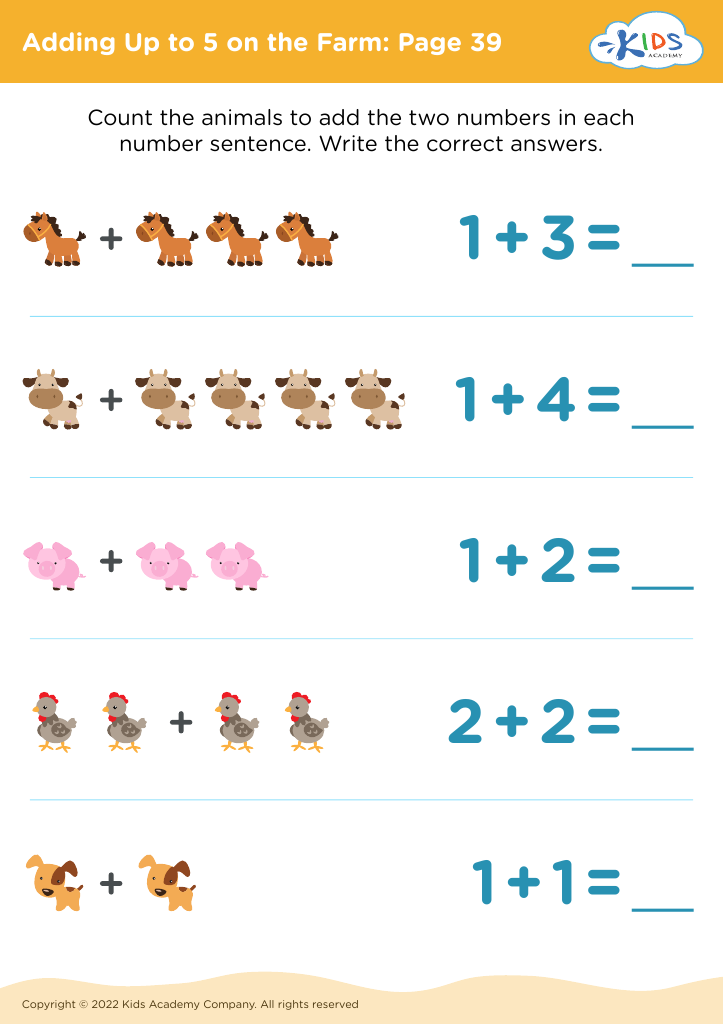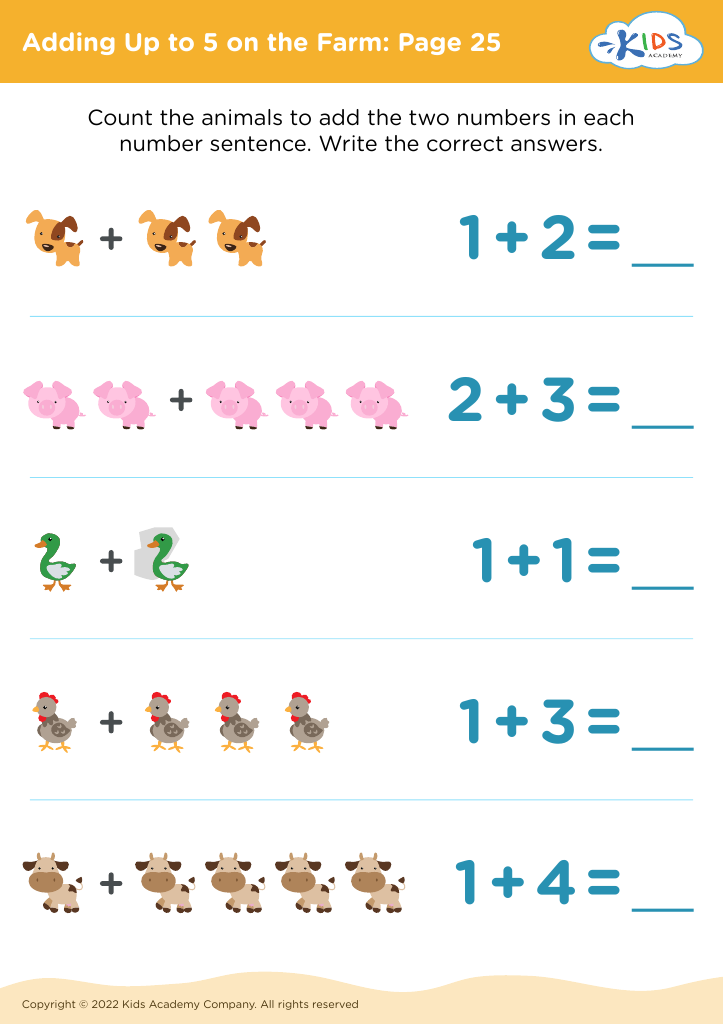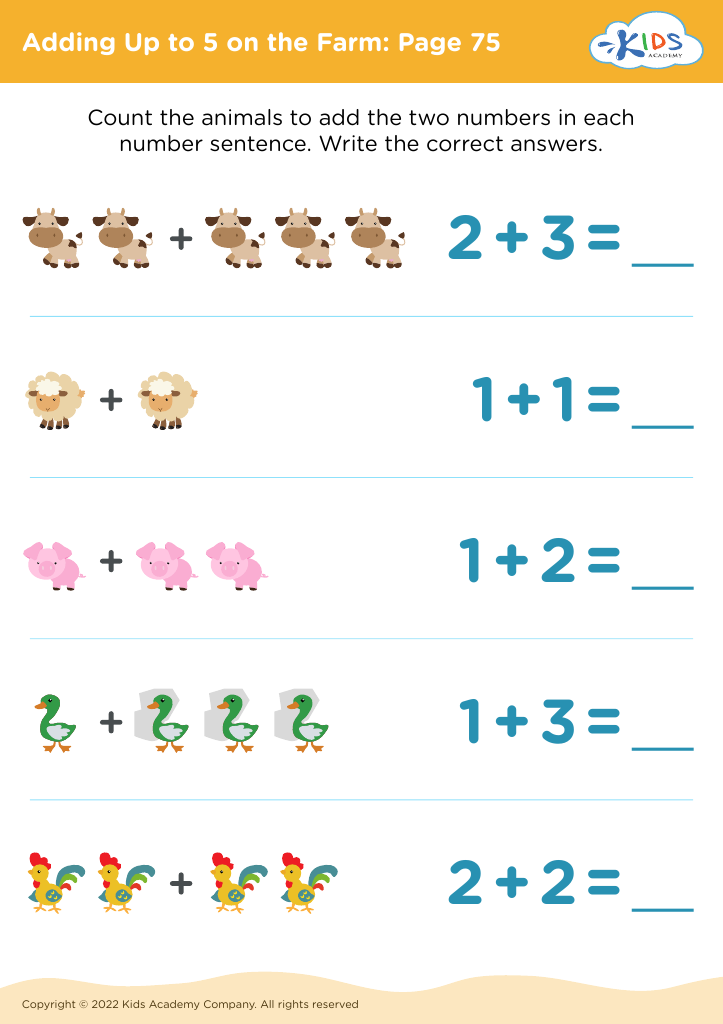Animal identification Math Worksheets for 5-Year-Olds
31 filtered results
-
From - To
Our "Animal Identification Math Worksheets for 5-Year-Olds" provide a fun and interactive way for young learners to develop essential math skills. Through engaging activities featuring their favorite animals, children practice counting, recognizing numbers, and simple addition. Each worksheet combines colorful illustrations with educational exercises designed to captivate young minds, fostering a love for learning and building foundational skills for future math success. Perfect for both classroom and at-home learning, these worksheets help children develop critical thinking, pattern recognition, and problem-solving abilities in a playful and supportive environment. Unlock your child's potential with our enriching animal-themed math activities!


Animal Tracks: Find 1 Less Worksheet


Animal Shadows Sorting Worksheet


Animal Prints Match-Up Worksheet
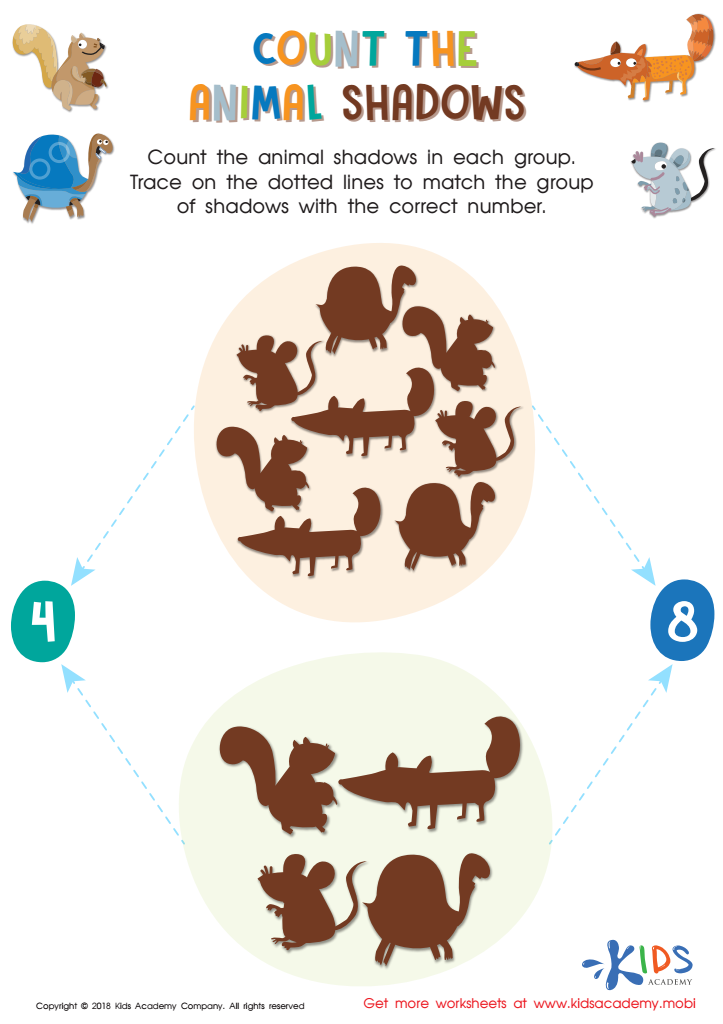

Count the Animal Shadows Worksheet
Animal identification math activities for 5-year-olds bridge the love for animals and introductory mathematics, offering a powerful learning tool. Here’s why parents and teachers should value these activities:
-
Engagement: Children are naturally fascinated by animals. Incorporating animals into math lessons can heighten their interest and attentiveness, making them more eager to learn.
-
Cognitive Development: Identifying animals alongside learning their quantities fosters memory and recognition, critical cognitive skills. For example, counting spots on a ladybug or stripes on a zebra blends numerical understanding with animal characteristics, enhancing memory retention.
-
Language Skills: Describing animals while counting their features aids vocabulary building and language development. Terms like “tusk,” “fin,” and “mane” expand their language repertoire.
-
Real-world Connections: Graphic representation of animals connecting numbers demonstrates practical math usage. Highlighting 3 elephants underlines the concept of ‘three’ with tangible examples.
-
Cross-curricular Learning: Integrating animal facts with numbers encourages interdisciplinary learning. Kids learn about nature/science while grasping fundamental math concepts like addition, pattern recognition, and sets.
-
Social Skills: Group activities involving animal identification foster collaboration as they discuss observations with peers.
Caring about animal identification math empowers children with well-rounded skillsets, making learning comprehensive, engaging, and contextually rich, paving the way for advanced learning stages.
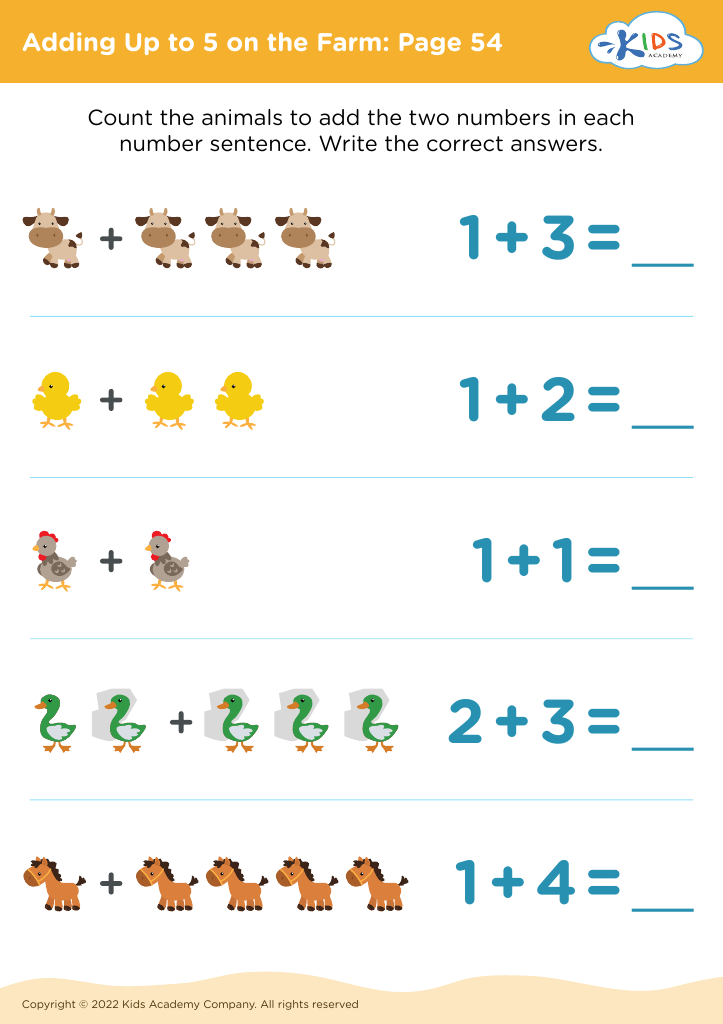

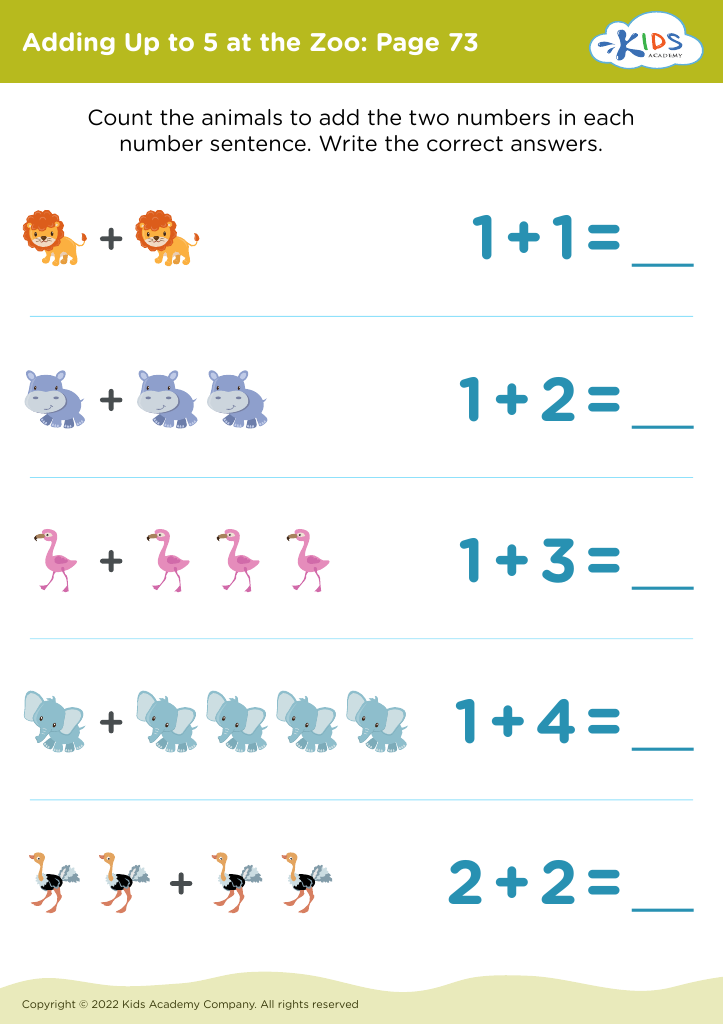
 Assign to My Students
Assign to My Students
